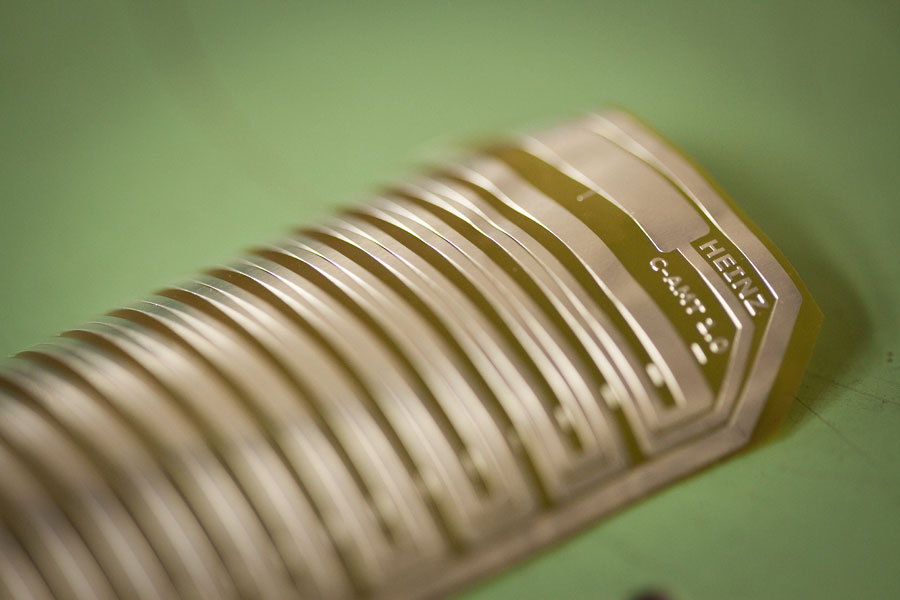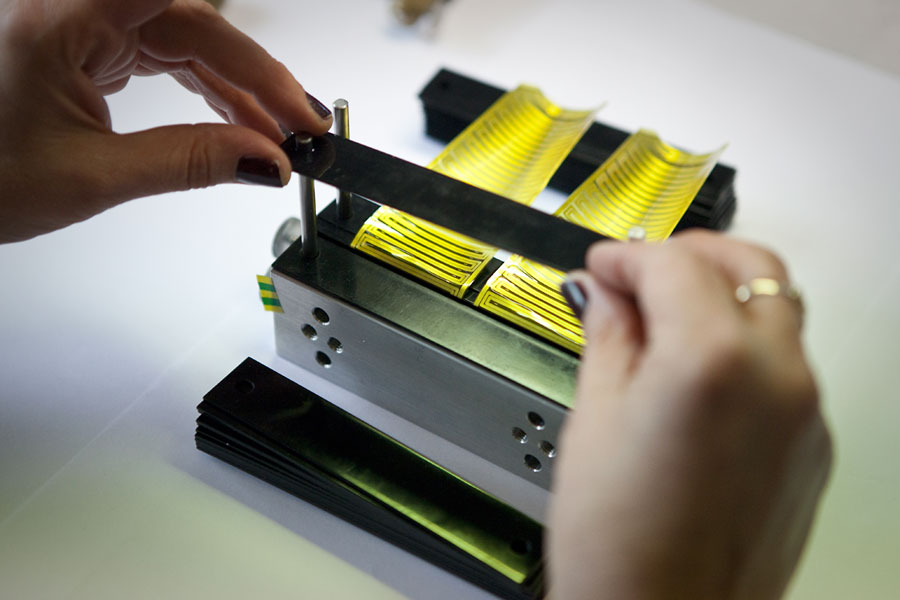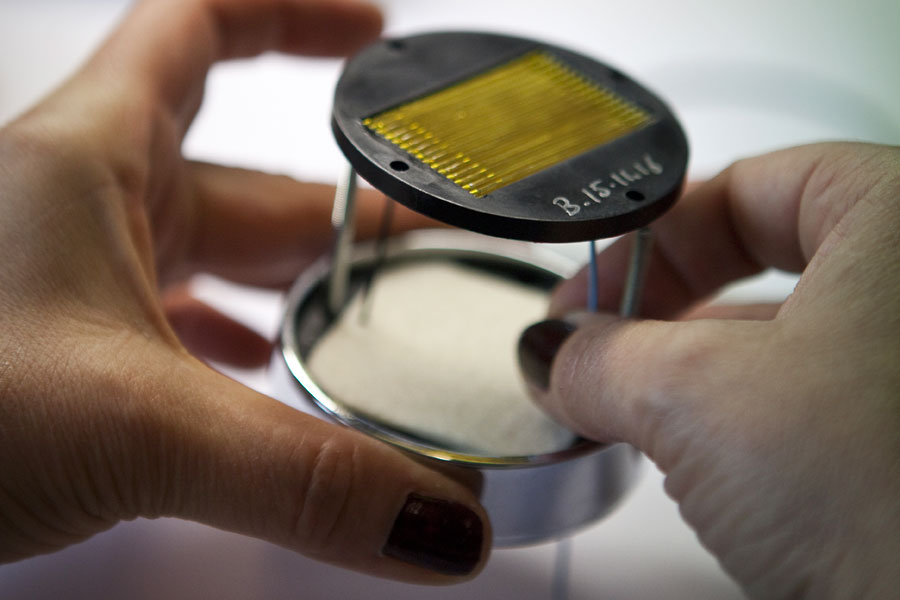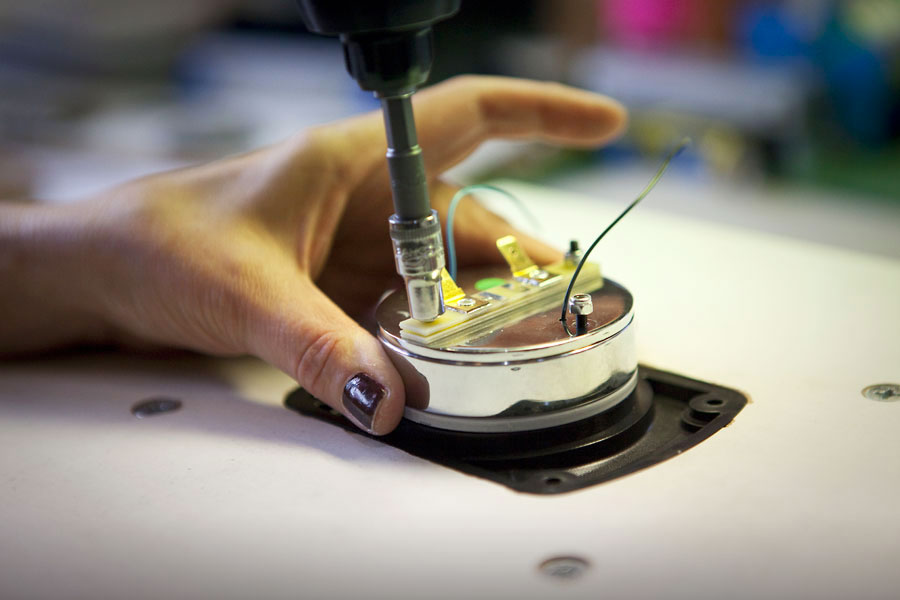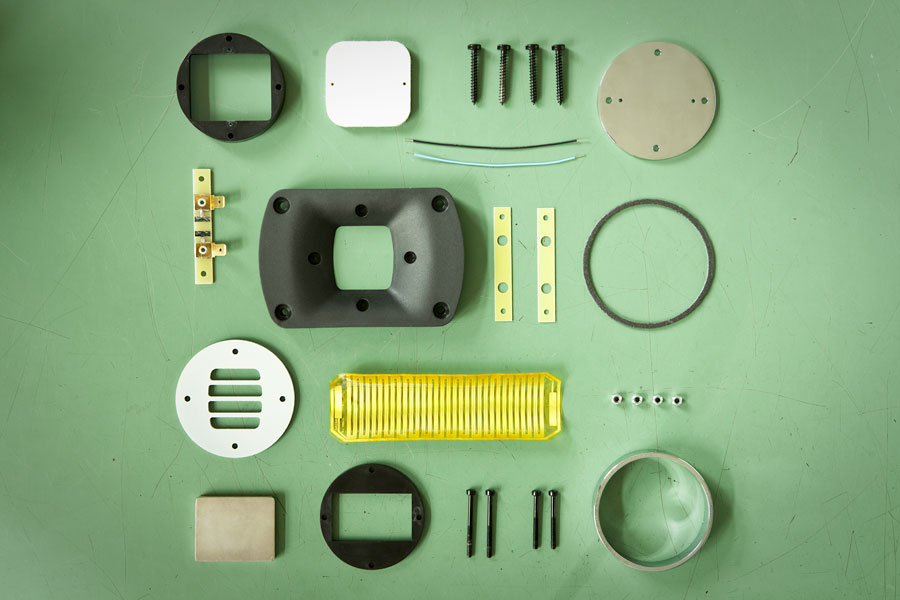Of the many ideas on how to build a loudspeaker transducer, Oskar Heil's (1908–1994) Air Motion Transformer (AMT) is unique in its way of making the air move. In the course of the history of loudspeakers, many different transducer designs have been introduced. All of them feature piston-like diaphragms that move the air in a 1:1 ratio so that the diaphragm velocity equals the air velocity. Whether we talk about electrostatic and magnetostatic speakers, ribbons, voice coil based dome and cone speakers or even a Blatthaller design – they all follow this particular design approach.
It was not until the early 1960s that German-American physicist Oskar Heil came up with a new idea and proposed a folded elastic diaphragm, where single folds open and close in an alternating pattern and thus ‘breathe' air in and out, with the special charm that the air driven through the folds is accelerated to a ratio four times as fast as the diaphragm itself. In the early 1990s, Klaus Heinz was so intrigued by Heil's idea that he used it to build a compact, reliable, and superior sounding tweeter. Heinz later went on to found ADAM Audio in Berlin, a company that manufactures loudspeakers based on Heil's invention. The X-ART tweeter designed by Heinz during his time at ADAM was widely praised and gradually revolutionized the speaker landscape, as similar designs emerged on both the HiFi and the studio monitor market. Today, Ars Aures Electrodynamic Designs takes another evolutionary step in the development of the AMT. In our studio monitors, a strong magnetic field lowers distortion and intermodulation while a special waveguide is used to reach lower crossover frequencies, which is crucial for shaping the midrange of 2-way studio monitors such as Ars Aures's Harmony Studio Master speaker system and Diva planar headphone.
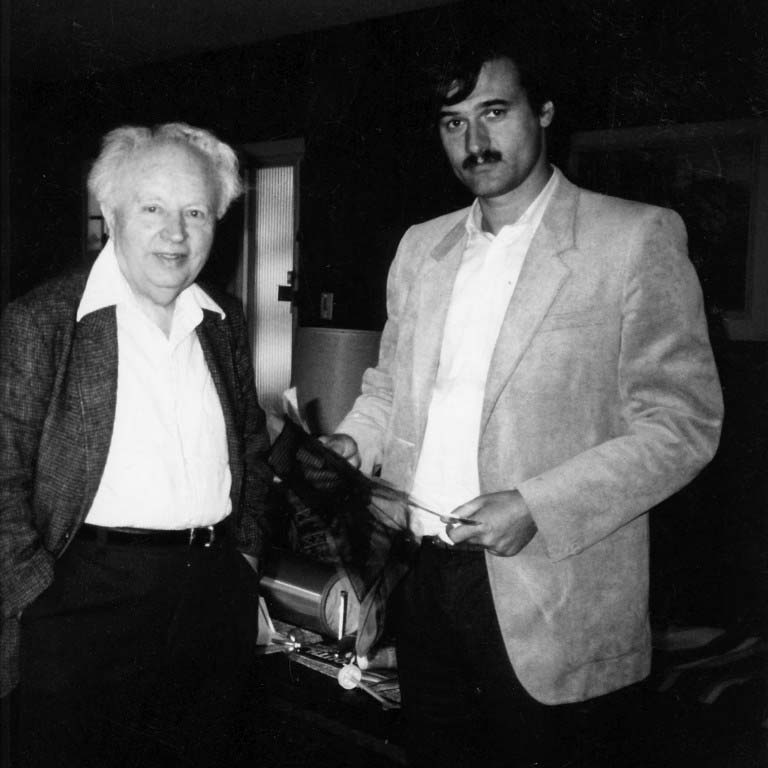
Design and Principle
The Air Motion Transformer is an electromagnetic driver, as it is based on the Lorentz force that moves the air in the single folds.The diaphragm itself has an aluminum circuit printed on it (violet arrows) and is surrounded by a strong magnetic field. The graphics in and around the small circles show the motion of the individual foils producing a sinusoidal waveform: from where it starts (black circle) through the positive (green circle) and negative (red circle) half-waves. The resulting air flow (blue arrows) is four (!) times faster than speed in which the individual folds move, which is a big advantage when it comes to reproducing music signals with fast transients (cymbals, plugged guitar strings, etc.).
The Ars Aures AMT: Manufactured in Berlin
Building an Air Motion Transformer takes time, expertise and calm hands. In the following photo-show, we want to give you an idea about the sophisticated manufacturing process behind each of our tweeters.
